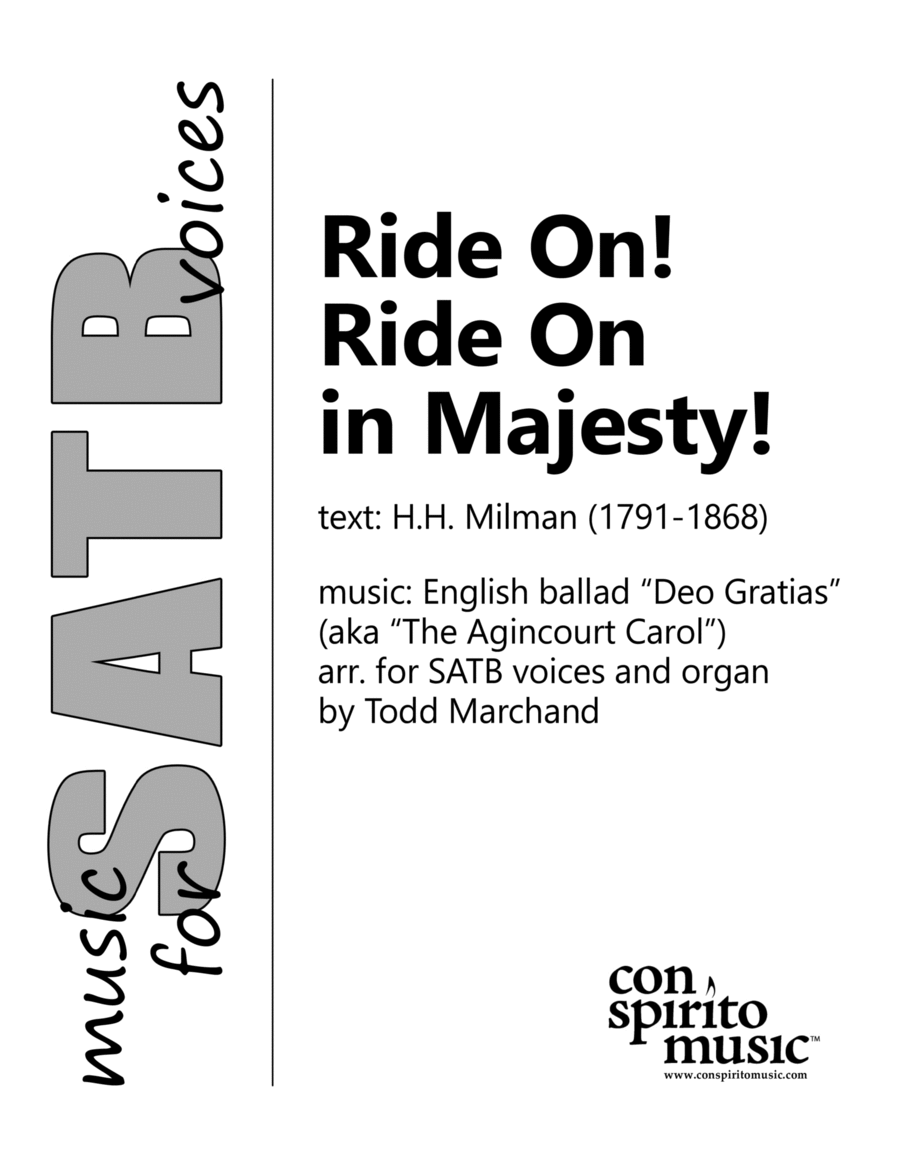Choral Choir,Choral (SATB) - Level 3 - Digital Download SKU: A0.1367409 Composed by English ballad. Arranged by Todd Marchand. Christian,Easter,Lent,Sacred. 5 pages. Con Spirito Music #951781. Published by Con Spirito Music (A0.1367409). Perhaps the most often-sung processional hymn on Palm Sunday, âRide On, Ride On in Majestyâ was written in 1820 by Anglican cleric, poet, and scholar Henry Hart Milman (1791-1868) and first  published in Reginald Heberâs Hymns Written and Adapted to the Weekly Church Service of the Year (1827). The hymn references Jesusâ entry into Jerusalem prior to his Passion, as recorded in Matthew 21:1-11.Writing for the Hymnology Archive of The Hymn Society in the US and Canada, editor Chris Fenner notes in his analysis of the text that:âThis hymn ... is much less a narrative or paraphrase of the triumphal entry (Matt. 21, Mk. 11, Lk. 19, Jn. 12) than it is a forward-looking hymn pointing from the palms to the cross to [Jesusâ] ascended position on the throne. The triumphal entry itself is a fulfillment of Zechariah 9:9 (âBehold, your king is coming to you . . . humble and mounted on a donkeyâ). The recurring opening line is possibly an allusion to Psalm 45:4 (âin thy majesty ride prosperouslyâ). âSome hymnological commentators connect this hymn with the idea of the great reversal in Philippians 2:5-12, where we find the Christ who humbled himself in a crucified death, later to be exalted, name above all names, to which every knee will bow. As Canadian hymn scholar Stanley Osborne observed, this hymnâs poetic strength is in its exploration of that duality:'Objective, robust, confident, and stirring, it possesses that peculiar combination of tragedy and victory which draws the singer into the very centre of the drama. It is this which gives the hymn its power and its challenge.'In this arrangement for SATB voices and organ, Milmanâs text is set to the 15th-century English ballad, âDeo Gratiasâ (aka The Agincourt Carol), with the refrain Ride on in majesty!â following each verse.©Copyright 2024 Todd Marchand / Con Spirito Music (ASCAP). All rights reserved. For more sacred, patriotic, folk, and holiday music for instruments and voices, visit www.conspiritomusic.com
